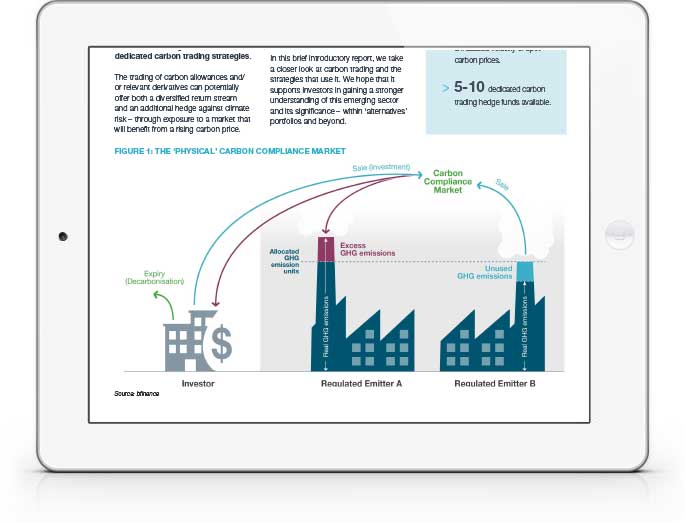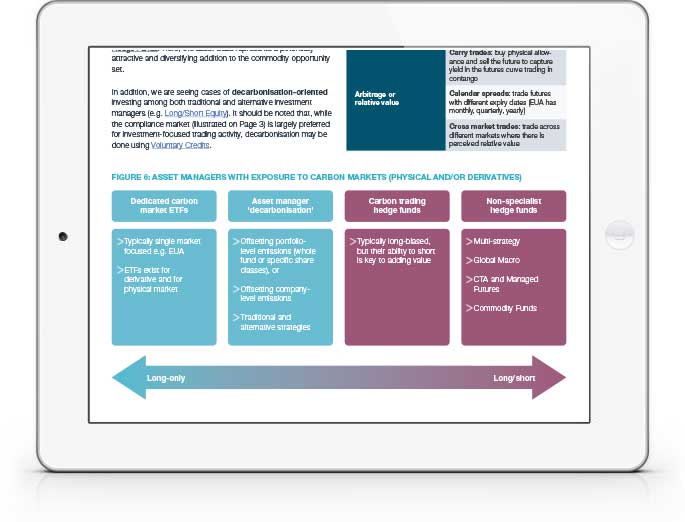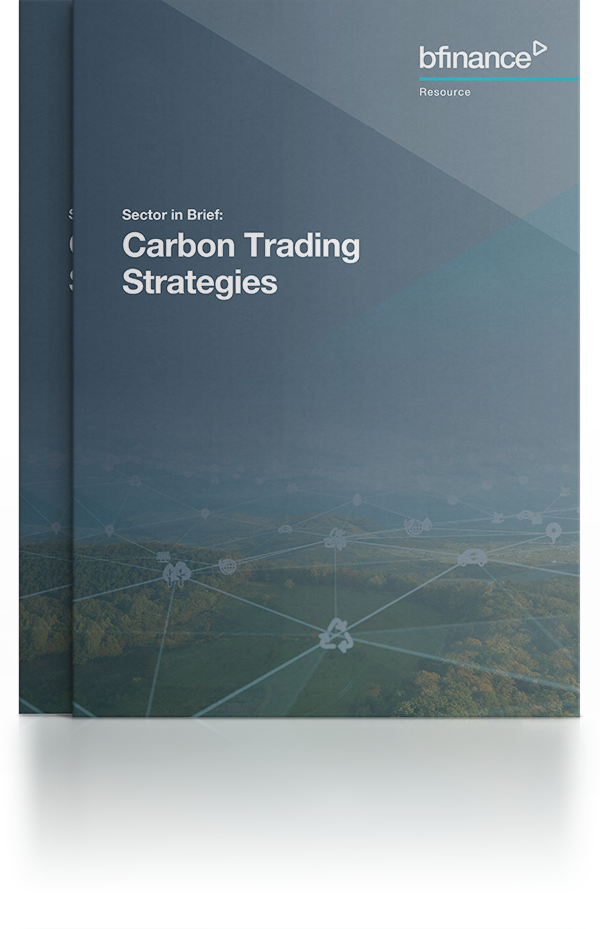
IN THIS PAPER
Asset class concept. There are two main regulatory mechanisms used to create a carbon ‘price’: Emissions Trading Systems (ETS) and Carbon Taxes. Both are designed to change the behaviour of high emitters, but the former creates a genuine financial incentive for delivering emissions that are even lower than what is officially permitted.
Market characteristics. An insight into the various characteristics of carbon trading strategies, including the return potential, diversification benefits and an overview of their liquidity.
Investment in practice. As the asset class has matured, dedicated hedge funds have emerged, focused entirely or predominantly on carbon trading. There are five-to-ten such strategies at present – a small cohort, but one that is on the rise.

WHY DOWNLOAD?
The trading of carbon allowances and/or relevant derivatives can potentially offer both a diversified return stream and an additional hedge against climate risk – through exposure to a market that will benefit from a rising carbon price. The purchase of regulatory allowances can also be used for decarbonisation purposes where the buyer explicitly removes credits from the market by holding them through to their expiration.
Proponents point to fundamentals that should support a trend of rising prices, volatility notwithstanding. Governments and supranational organisations view increasing prices as an important mechanism for encouraging reductions in emissions over time. Yet the picture is nuanced, as illustrated by 2023 price declines in the EU and the UK.
In this brief introductory report, we take a closer look at carbon trading and the strategies that use it. We hope that it supports investors in gaining a stronger understanding of this emerging sector and its significance.
Important Notices
This commentary is for institutional investors classified as Professional Clients as per FCA handbook rules COBS 3.5R. It does not constitute investment research, a financial promotion or a recommendation of any instrument, strategy or provider. The accuracy of information obtained from third parties has not been independently verified. Opinions not guarantees: the findings and opinions expressed herein are the intellectual property of bfinance and are subject to change; they are not intended to convey any guarantees as to the future performance of the investment products, asset classes, or capital markets discussed. The value of investments can go down as well as up.


 English (Global)
English (Global)  Français (France)
Français (France)  Deutsch (DACH)
Deutsch (DACH)  Italiano (Italia)
Italiano (Italia)  English (United States)
English (United States)  English (Canada)
English (Canada)  French (Canada)
French (Canada) 

